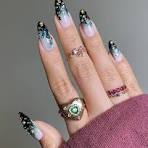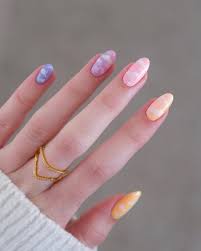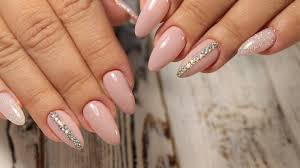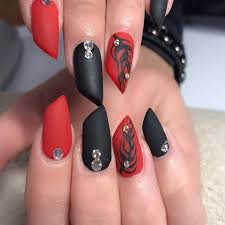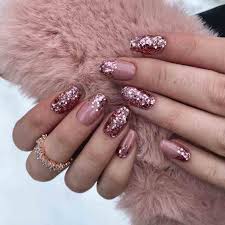The story of acrylic nails starts in a surprising place — with a dentist. Back in the 1950s, Dr. Robert Slack, while working in his dental office, had an unfortunate accident when he broke his fingernail. With a quick need to fix it, he began experimenting with chemicals and materials typically used for dental work. His goal was simple: to create a covering for his broken nail. Little did he know, this would pave the way for what would become a revolution in nail enhancement.
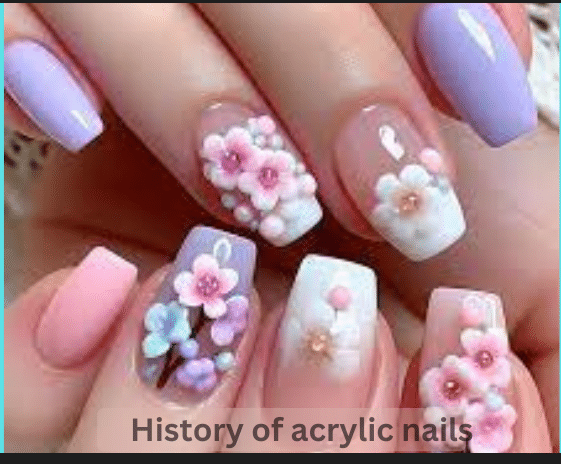
Interestingly, artificial nails have been around for thousands of years, with the ancient Egyptians being among the first to use them as symbols of wealth and status. Egyptian women, especially, sported long nails crafted from gold, ivory, and bone. These nails were a symbol of luxury, as they were a direct contrast to the manual labor performed by their peasant counterparts, who were banned from wearing the color red on their nails. That color was reserved exclusively for royalty, with Queen Nefertiti famously wearing ruby red fingernails and toenails. They were achieved using a mix of henna dye and, in some cases, even blood.
The Early Beginnings
The creation of acrylic nails as we know them today can be traced back to Dr. Maxwell Lappe, who, in the early days, invented the first fake nails specifically for nail biters. These were the very first acrylic nails, intended to help women stop biting their nails at home. However, these nails were quite thick, and their thickness made them less popular. It wasn’t until the 1950s when Dr. Fred Slack refined the concept in his dental office. He used dental acrylic, a material typically used in fillings, crowns, and veneers, to create a nail-like extension for his thumbnail. After a happy accident, he decided to perfect his technique and began working with family members to launch a company that would go on to innovate in the world of nails. This company is still operational today, providing materials to manicurists and salons globally.
This marked the beginning of the modern salon acrylic nails that many of us are familiar with today. Now, bio-gel and acrylic nails are not only strong and safe, but also available in a wide range of colour combinations and designs. From classic French ombre to tie-dye and even dramatic corkscrew designs, technicians around the world have made nail enhancement a global phenomenon in the beauty and fashion industries. More recently, blooming gel has also become a popular product, offering a unique way to create beautiful, blended designs with ease.
The History and Development of Acrylic Nails
The Commercialization of Acrylic Nails
The commercialization of acrylic nails revolutionized the beauty industry, making nail extensions accessible to the masses. As demand grew, salons began offering these enhancements, and the art of nail enhancements evolved to include three-dimensional appliques, unique designs, and intricate decorations. Today, acrylic nails are a staple in the beauty world, with advancements in materials and techniques continually improving the ways we care for and adorn our nails.
Acrylic Nails and Cultural Impact
Growing up, I often sat in salons, watching women transform their hands into canvases of nail art. It was more than just beauty—it was pure artistry. The rise of acrylic nails is not just about the evolution of technology or a modern nail extension. It’s about how artificial nails became a bold fashion statement, especially among Black women who used them to break boundaries and express personal identity. One striking example is Flo Jo—Florence Griffith Joyner—who caught global attention during the 1988 Olympics, not just for winning a gold medal, but also for her unforgettable, vividly painted acrylic nails. However, there was initial backlash, particularly in the early 2000s, where longer nails were viewed as clashing with the ideal conservative look, especially among women from wealthier backgrounds.
Icons, Influence, and Rebellion
The cultural connection of acrylic nails can be seen in the pages of Vogue or on a striking magazine cover. Donyale Luna, the first Black woman to appear on a cover, set the tone for an era where nails were more than decoration—they were statements. During the vibrant disco era, divas like Diana Ross and Donna Summers wore their long nails with pride in press photos and on album covers, turning them into visual trademarks. These women were beauty pioneers, using style to stand against societal racism and challenge the dichotomy between accepted beauty norms and personal expression. Today, when I see the elaborate nail art trends flooding social media, I see the legacy of those who made acrylic nails more than just a trend—they made them a voice.
Who Invented Fake Nails? Intresting facts
The Rise of Press-Ons and the Most Attractive Nail Color Trends
Over the years, acrylic nails have evolved through many iterations. Back in the early days, alternatives like press-on nails were also being explored. Companies such as TruNails, Lee Press-On Nails, and Eylure—originally a false eyelash brand—were among the innovators. They earned credit for developing temporary nails that would adhere to your natural ones using a sticky tab. Though they lacked the lasting power and natural look to compete with professional acrylic nails, their convenience made them popular, especially for home use.
I remember during the Coronavirus lockdowns, salons were closed, and I turned to press-ons myself. Brands like Lilac St. had developed styles with improved longevity, flexible, life-like look, and creative designs that matched the modern style. When choosing the most attractive nail color, I found that soft neutrals and deep reds looked incredibly elegant on acrylic nails, especially in natural light. It reminded me that color plays just as much a role in confidence as the shape itself.
How Much to Tip at Nail Salon and Why It Matters
A little tip goes a long way in a salon—especially if you’ve ever had a standout manicure or intricate designs done. When considering how much to tip at nail salon, I usually aim for 15–20%, especially when I’ve had professional services that involve sculpting nails, creative finishes, or help fixing a broken area. Nail techs often spend years refining their materials and technique, so tipping not only shows appreciation, but supports their craft in a meaningful way.

Final Thoughts:
Acrylic nails have come a long way from a dentist’s quick fix to a beauty must-have in salons and homes alike. Whether you’re into the durability of sculpted nails or the ease of press-ons, there’s a style and story behind every set. It’s amazing how a small idea and a broken nail turned into something so big—and so beautiful.

